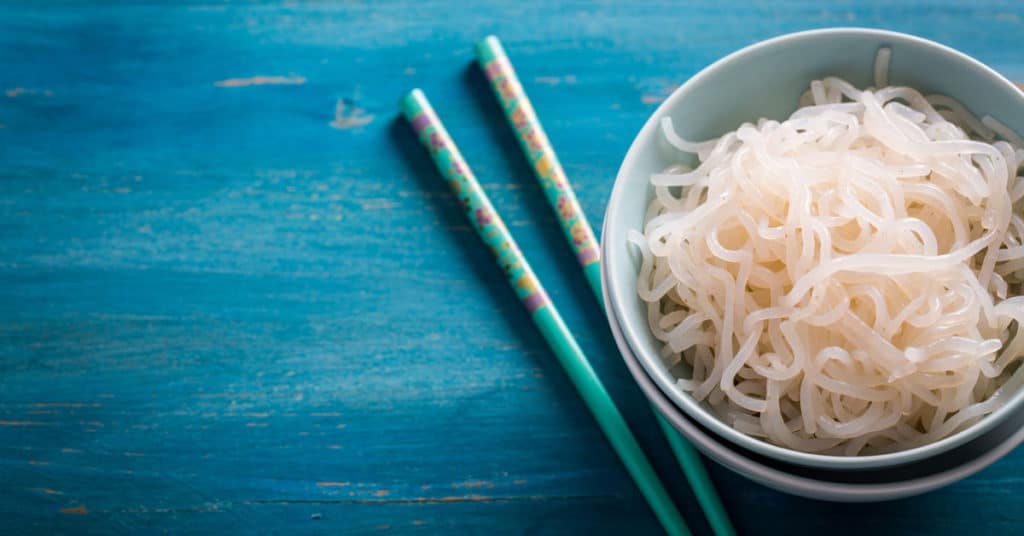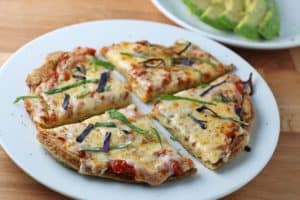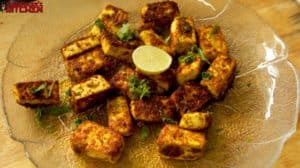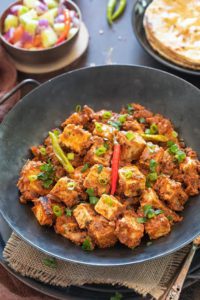What Are Shirataki Noodles?
Shirataki noodles (aka miracle noodles, aka konjac noodles, aka konnyaku noodles) is an ingredient popular in Asian cuisine. It\’s made from konjac plant which is ground and then shaped into noodles, fettuccini, or even rice. Shirataki noodles are almost zero calorie and zero carb.
They are 97% water, 3% fiber, and traces of protein, fat, and calcium. There are 4 kcal and ~ 1 gram of net carbs per 100 g / 3.5 oz of shirataki noodles. If you find that the packaging says \”zero\” calories or \”zero carbs\”, etc. it\’s because the FDA allowed products with less than 5 calories / less than 1 gram of carbs, protein, and fat to be labeled as zero.
What are the Benefits of Eating Shirataki Noodles?
- Soluble fiber is very low in calories and lowers the energy-to-weight ratio of the food.
- It has shown to promote satiety via several mechanisms. Including shirataki noodles will keep you fuller for longer!
- Slows down digestion which again induces satiety.
- Inhibits carbohydrate absorption and improves glycemic parameters (lowering blood glucose levels and inhibiting insulin spikes).
- It reduces fat and protein absorption (only beneficial for excessive calorie consumption).
Are There Any Side Effects of Eating Shirataki Noodles?
- It may cause minor gastrointestinal complaints, such as bloating, gas, and mild diarrhea. If it does, reduce the serving size.
- It may reduce the bioavailability of oral medications. You should avoid eating shirataki noodles with your medication and supplements.
- There have been some incidents of the esophagus, throat, or intestine blockage by using glucomannan tablets which absorb large amounts of water. Note that the tablets are not the same as shirataki noodles which already contain water and don\’t pose this risk.
- Since there are no nutrients, do not overuse products containing glucomannan. The vast majority of your diet should be real food (eggs, meat, non-starchy vegetables, raw dairy, avocados, berries, nuts, etc).
How To Make Shirataki Noodles With Variation Of Vietnamese Pho
Ingredients
- 1 tablespoon coconut oil
- 2-inch piece of fresh ginger, sliced
- 1 large onion, peeled and quartered
- 5 cloves garlic, smashed
- 6 cinnamon sticks
- 3 whole star anise
- 10 cloves
- 4 cardamom pods, smashed
- 12 cups water
- 2 cups beef broth
- 2 tablespoon fish sauce (gluten-free)
- 1 tablespoon palm sugar (omit for keto)
- 2-pound flank steak
- 1 pound shirataki noodles
- 4 ounces mung bean sprouts
- 2 jalapeños, sliced
- 1 cup fresh basil leaves
- 1 lime, cut into wedges
Instructions
-
-
Place a large stockpot over medium heat.
-
Add the onion wedges, ginger, garlic, cinnamon, star anise, cloves, cardamom, and coconut oil.
-
Sauté the onions and spices for about 10 minutes, stirring to brown the onions on all sides.
-
Pour in the water, beef broth, fish sauce, and sugar.
-
Bring it to a simmer. Then lower the heat if needed, and simmer for at least 60 minutes.
-
Meanwhile, flash-freeze the flank steak for 30 minutes. It should be frozen on the outside, yet still mostly thawed on the inside.
-
Then slice the steak against the grain into paper-thin pieces.
-
Use a skimmer to pull all the onions, and spices out of the broth.
-
Then arrange the mung bean sprouts, sliced jalapeno, lime wedges and basil on a serving plate.
-
Add in the noodles to the broth and cook for 2-3 minutes, or according to the package instructions.
-
Turn off the heat and stir in the thin pieces of beef. They should be thin enough to cook in the hot broth without additional heat.
-
Scoop the pho into bowls and allow guests to add their own veggie garnishes.
-
Notes
- If you can\’t find shirataki noodles, you can add raw zucchini noodles instead.
- If \”low carb\” is not necessary for your diet, rice noodles are traditional.
- The longer the broth cooks the better.
- You can turn the heat down to low and allow it to simmer for 2 hours.
- Or make it a day ahead for intensified flavor, before adding the noodles and beef.
Nutritional Information
Calories: 136kcal
Carbohydrates: 4g
Protein: 14g
Fats: 6g









